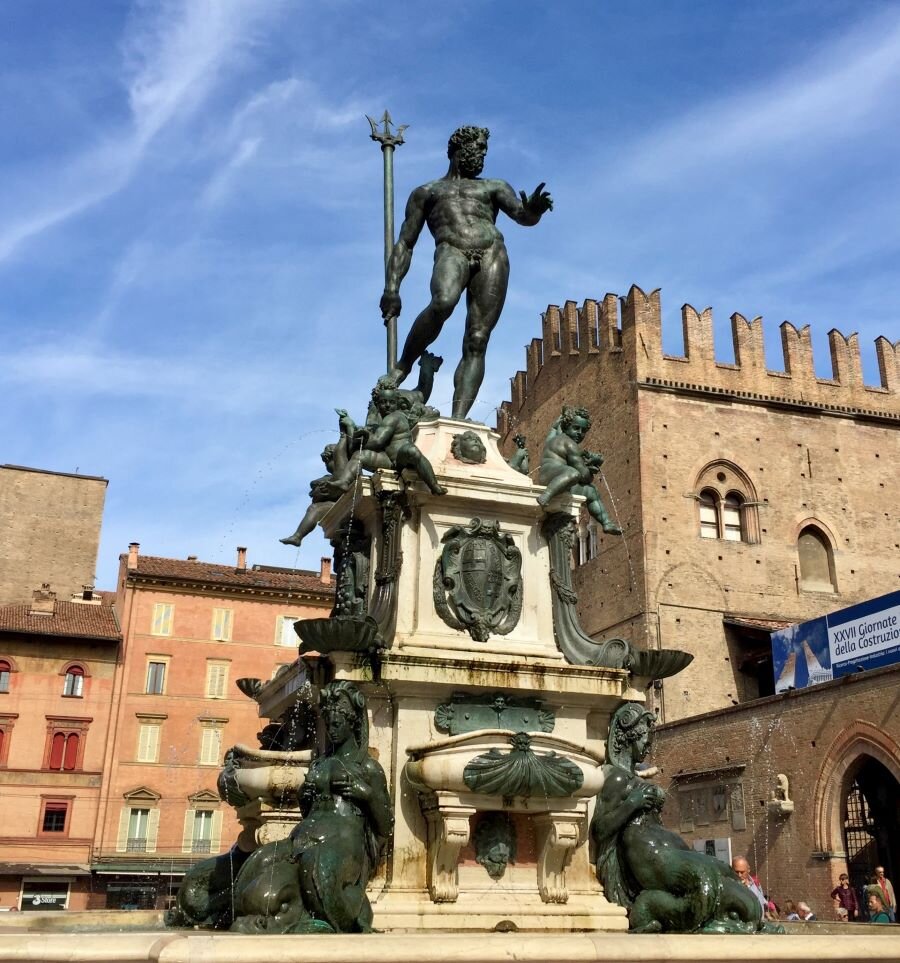What is Bologna, Italy known for?
/Bologna is a wonderful city in Italy and less touristy as most people head to the famous haunts of Venice, Rome and Florence.
Full of character, Bologna has several nicknames La Rossa/the red, due to the colour of its buildings, La Dotta/the learned, because it has an ancient university and La Grassa/ the fat one, as the food here is considered outstanding even within Italy.
Steeped in ancient history, Bologna is such a treat for the senses. It has amazing food, a vibrant, young atmosphere and plenty to see and do.
It’s also considered a city of significance throughout Italy, so how have we all missed it so far? In this article we cover the history of Bologna, it might just surprise you!
If you’re looking for what to see and do during a city break, check out this post as well.
Credit: Unsplash. Two Towers (Le due Torri: Garisenda e degli Asinelli).
Where is Bologna?
Bologna is the capital and largest city in the region of Emilia Romagna, Italy. Although it’s been said that all roads lead to Rome; all foodie and culture fans should take the road to Bologna!
It has a very central location between the northern and central areas of Italy and has been a hub of commerce, culture, politics, and travel in Italy since its very origins.
History of Bologna
Grab a cappuccino there is a lot to learn here! Bologna is one of the oldest cities in Italy. It became a settlement during the Bronze Age, around 1000 B.C. along the banks of the Po and Rhine rivers. It developed its own culture during the Iron Age, when it became known as the Villanovan Civilization. The villagers were artisans, working as potters and blacksmiths and had working relations with the Phoenicians, and the Greeks, while acting as a trade center between Northern and Central Italy.
Bologna was completely surrounded by the Etruscans by 600 B.C. The peace-loving people, who engaged mainly in craft-works and commerce, became very wealthy as the centre of Etruria; during this period, it was known by the name Felsina and enjoyed certain fame because of its industriousness.
Unfortunately, the peace lasted only until 350 B.C., when Felsina was conquered by the Galli Boii (Celts).
Credit: Unsplash. Cathedral of San Petronio in Bologna, on its main Square Piazza Maggiore.
Boii and Bologna
It is thought by historians that the city name Bologna was derived from its Celtic and Roman inhabitants. The Celtic tribe Boii, were settled in Bologna before the Romans. The Celts maintained control of the city until 200 B.C. when they were defeated by the Romans led by Publius Cornelius Scipione Nasica. Then the city became known as ‘Bononia’ and became a Roman colony governed by the Roman Consul Marcus Emilio Lepidus. The road ‘Via Aemilia’ helped designate the city as an important centre of the Roman road network.
After the fall of Rome, Bononia finally realized that they had no real defense against marauders; as a result, they built very high defensive walls around the city, much of which still stands today. The Bishops of Rome, constructed churches in the hopes of bringing a sort of hope to the war-weary population. Strong ties between Bologna and the Church – sometimes friendly and sometimes not – were forged because of this programme of construction.
The fortifications were reinforced in 431 A.D. by Petronius, who also restored public buildings and began the construction of the Basilica di Santo Stefano. The ‘Bolognese’, the word for a person from Bologna, built the Basilica di San Petronius in Piazza Maggiore (the main square) in his honor 900 years later.
University of Bologna
In 1088 the University of Bologna was constructed and became the most important European University. Due to this and many other activities going on at the time, Bologna quickly became a potential target for the major powers. It was sought after by the Church, Imperial powers and rich and powerful members of the nobility because of its strategic location and economic and cultural benefits resulting from the University and flourishing economy.
Credit: Unsplash. Neptune Statue in Bologna, Italy.
Independent thinkers
The Bolognese people have always been quite a force to be reckoned with. Throughout history they resisted all attempts at subjugation and were able to throw off both religious and foreign powers, resisting even through civil wars.
Unfortunately, they were not as successful at resisting disease, and the population was badly hit by the plague during the 1600s. Despite this, it was also a period of fervent activity with the construction of magnificent palaces and increased artistic movements. One beautiful example is the angel candelabra sculpted by Michelangelo, found in the Church of San Domenico.
Bologna, as the second Papal State after Rome, was involved in a series of events during the 19th century that changed the face of Europe. During Napoleon's reign, it served as the capital of the Cispadana Republic. It returned to the Papacy during the Restoration, but its ties with the Papal State were definitively severed when the city became actively involved in the Revival movement, which culminated with the ostracism of the Austrians from Italy.
During WWII the city was heavily bombed, but by 1943 it had become a key part of the Italian Resistance movement against fascism. Recently made famous again by the release of the partisan song ‘Bella ciao’.
In the Cold War, Bologna was a political stronghold of the Italian Communist Party. Since then the city has had a series of left-wing mayors and now is governed by a coalition of left and centre parties.
Now you know a bit more about the history of Bologna, book your trip to this pretty porticoed city! It’s lively, vibrant and the perfect place to visit or even make your home.
At the very least you will fill your senses and your stomach with wonder and find it hard not to return!
Bologna is a great place to roam around the city center, and here you can find the best places all within a short walk of each other. If you're planning a day trip to Bologna or looking to explore the city in more depth on a longer break then here are some suggestions of things you can do on your first visit:
Visit Bologna University - the oldest university in continuous operation in the world, the exterior of this establishment really is a good place to take in some of the feats of this historical city.
Undertake a walking tour of Bologna - it's a good idea to take in a walking tour of this Italian city to really take in the historic center.
Explore Piazza del Nettuno - here you'll find the famous fountain of Neptune, which is one the major attractions in Northern Italy. Consider a local guide to help you navigate through this and the narrow streets if this is your first time here. A short guided tour might help you discover some of the best things about this area that you won't find on google.
Book a food tour - whether you're looking for the best way to find the fresh produce and food stalls in the historic centre or wanting to take part in some food tasting, then this is a great way to try something different. Trying the traditional balsamic vinegar and famous parmesan cheese is not to be missed!
Visit Basilica of San Petronio / Basilica di San Petronio - arguably one of the best views in all of Bologna, this historic building is a feast for any art and architecture lover. The doorway in particular adorns some beautiful details by Jacopo della Quercia.
Head to Torre dell'Orologio - this incredible clock tower offers a panoramic view of the capital of the emilia-romagna region.
Grab your guide book before you go!
Disclosure: Some articles contain affiliate links, this means should you make a purchase I may receive a commission at no extra cost to you.






































